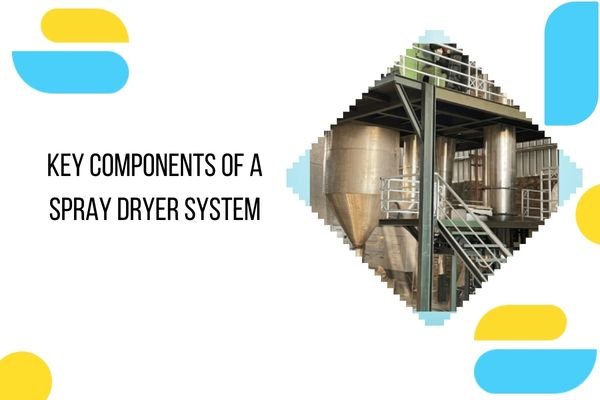Key Components of a Spray Dryer System

Key Components of a Spray Dryer System A spray dryer is a vital technology used across industries such as food, pharmaceuticals, and chemicals to convert liquid substances into dry powders efficiently. The Spray Dryer Process involves atomization, moisture evaporation, and product collection, ensuring high-quality powder production with minimal product degradation. To maximize performance, understanding the essential components of a spray dryer system is crucial. 1. Feed System: The Starting Point of Efficiency The feed system delivers the liquid material into the drying chamber at a controlled rate. It consists of storage tanks, feed pumps, and pipelines designed for precise flow management. Proper feed system configuration ensures uniform atomization and consistent product quality. 2. Atomizer: The Core of Particle Formation The atomizer plays a pivotal role in breaking down the liquid feed into fine droplets, increasing surface area for efficient drying. Depending on the application, manufacturers use: Rotary Atomizers for high-capacity operations. Pressure Nozzles for uniform droplet distribution. Ultrasonic Nozzles for sensitive materials requiring gentle drying. 3. Drying Chamber: Where Transformation Happens The drying chamber facilitates moisture evaporation by exposing atomized droplets to hot air. Chamber size, shape, and air distribution significantly impact drying efficiency and powder consistency. Optimized chamber design reduces wall build up and ensures uniform drying. 4. Air Heater and Blower: Driving Thermal Energy Hot air is essential for moisture removal. The air heater precisely controls inlet air temperature, while the blower ensures even airflow distribution. Proper temperature management prevents product degradation while maintaining energy efficiency. 5. Cyclone Separator & Bag Filter: Ensuring High Product Recovery Efficient separation of dried particles from exhaust air is crucial. This is achieved using: Cyclone Separators, which use centrifugal force for powder collection. Bag Filters, which trap ultra-fine particles, minimizing product loss. 6. Product Collection System: Delivering the Final Output The dried powder is collected at the bottom of the drying chamber or through cyclone separators. Additional mechanisms such as vibrating sieves or pneumatic conveyors can be used to optimize powder flow and prevent agglomeration. 7. Exhaust System: Ensuring Safety and Compliance The exhaust system effectively removes waste air and residual moisture. It includes ductwork, blowers, and environmental control mechanisms such as scrubbers to meet emission standards and ensure workplace safety. Optimizing these core components enhances product quality, improves energy efficiency, and ensures consistent spray drying performance for industrial applications.


